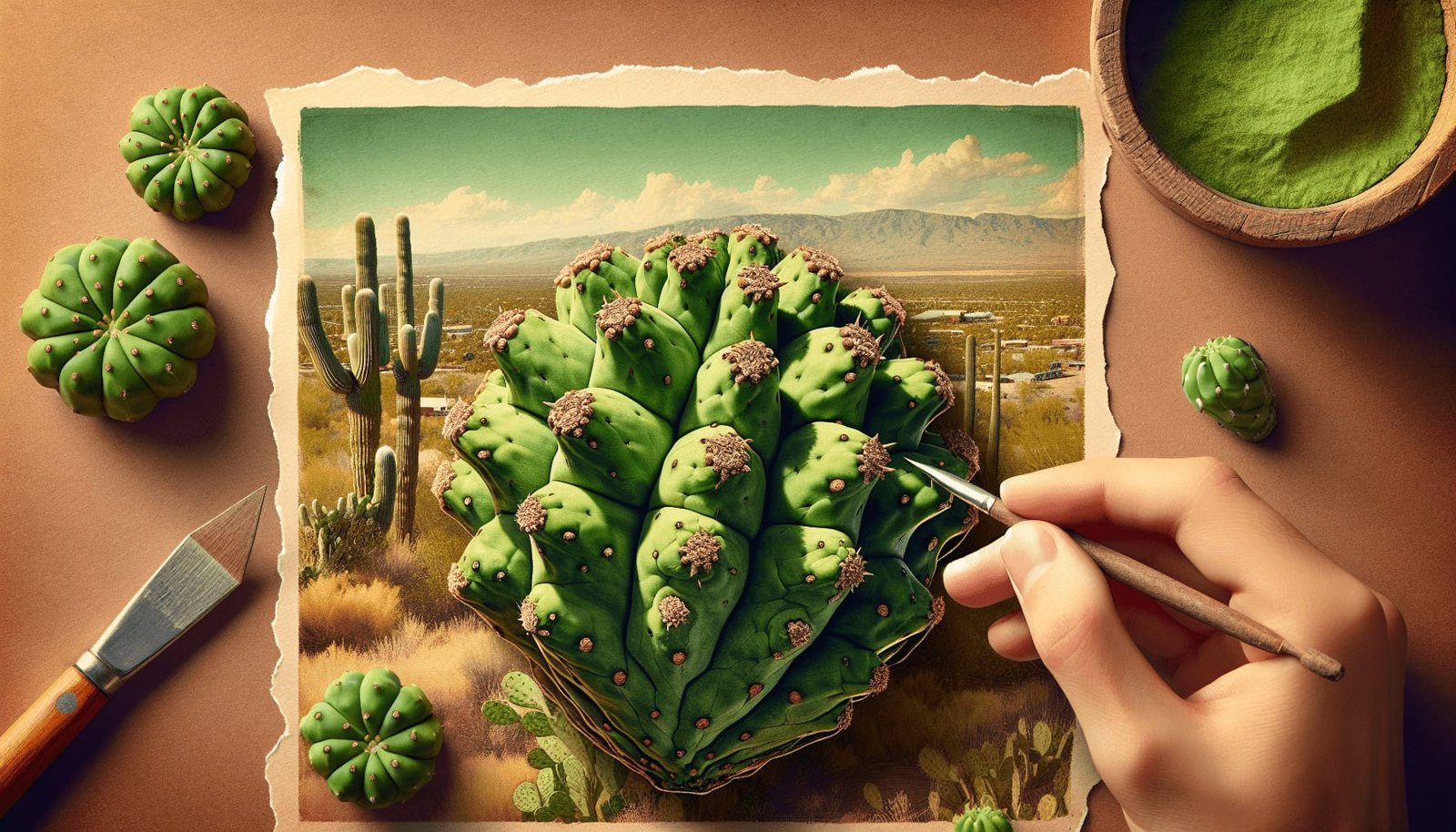Have you ever thought about adding a touch of the desert to your garden? If so, growing Nopal cactus from pads might just be the perfect project for you. With their unique appearance and ability to thrive in dry conditions, Nopal cacti are both fascinating and practical additions to any garden. But how exactly do you go about growing these special plants from pads?

Understanding Nopal Cactus
Nopal cactus, commonly known as prickly pear, is part of the Opuntia genus. This type of cactus is renowned for its paddle-like pads, which are both visually appealing and useful. Besides being attractive landscape plants, several species of Nopal are edible and used in various culinary dishes. Before you start growing them, it’s vital to understand their basic characteristics.
The Significance of Nopal Cactus
Nopal cacti hold cultural significance in various parts of the world, particularly in Mexico, where they are a staple in local diets. The plants are not just admired for their resilience and beauty, but also for their myriad uses. The pads (or “nopales”) and fruit (called “tunas”) are consumed in numerous dishes. In addition to their culinary uses, Nopal cacti have been utilized in traditional medicine for their purported health benefits.
Nopal Cactus in Various Climates
Adaptable to varying climates, Nopal cactus predominantly thrives in arid and semi-arid regions. However, this doesn’t mean you’re limited to such areas if you want to grow them. As long as you have sunny conditions and well-draining soil, you can cultivate Nopal cacti in your garden, regardless of whether you’re in a desert or not.
Preparing to Grow Nopal Cactus
Before embarking on your journey to grow Nopal cactus from pads, it’s crucial to prepare adequately. Proper preparation sets the foundation for healthy growth and success in your gardening endeavor.
Selecting Healthy Pads
The first step in growing a Nopal cactus is selecting the right pads, which will serve as your plant’s starting point. Choose healthy, mature pads that are free from any discoloration, blemishes, or signs of disease. Ideally, the pad should be firm with a consistent green color. It’s best to source pads from an established plant that you know is thriving. If you don’t have access to any Nopal cacti already, consider purchasing pads from a local nursery or online supplier.
Tools and Equipment You’ll Need
Having the right tools can make growing Nopal cacti easier and more efficient. Here’s a quick list to ensure you have everything necessary:
| Tool/Equipment | Purpose |
|---|---|
| Gardening Gloves | Protect your hands from thorns |
| Pruning Shears | Detach pads cleanly |
| Spade or Trowel | Prepare planting site |
| Pots/Containers | Start pads indoors if necessary |
| Well-Draining Soil | Ensure good drainage |
Timing It Right
Timing can be crucial when planting Nopal pads. Spring and early summer are usually the ideal periods to start planting, as these provide the warm and sunny conditions that cacti prefer. Starting in the right season ensures that the pads have the best opportunity to take root and grow effectively.
Planting Nopal Pads
Once you have your preparations in place, it’s time to plant the Nopal pads. This involves a few straightforward steps, but attention to detail is important to maximize your chances of success.
Allowing Pads to Callous
Before planting, it’s crucial to let the cut end of the Nopal pad callous over to prevent rot. To do this, find a dry and shaded area and lay the pad flat, with the cut side exposed to the air. Allow it to sit undisturbed for 1-2 weeks. You’ll notice a hard, white layer forming over the cut, signaling it’s ready to plant.
Choosing the Right Location
Selecting the proper location in your garden can make a significant difference in the health of your Nopal cactus. These plants thrive in full sun, needing at least 6-8 hours of direct sunlight per day. Additionally, make sure the site has well-draining soil to prevent waterlogged roots that can lead to rot.
Planting Process
With a calloused pad and an ideal location, you’re ready to plant:
Dig a Shallow Hole: Using a spade or trowel, dig a hole that is just deep enough to hold the base of the pad upright. The pad should sit about an inch into the soil.
Inserting the Pad: Place the calloused end of the pad into the hole, ensuring it remains upright. The pad should be stable and vertical for optimal growth.
Backfill the Soil: Gently backfill the soil around the base of the pad, but avoid compressing it too tightly. Firmly packed soil can hinder water drainage and root development.
Water Sparingly: After planting, water the pad slightly. Ensure not to overdo it, as too much moisture in the beginning stages can promote rot.
Caring for Your Nopal Cactus
Once your Nopal pads are planted, you’ll need to focus on caring for them properly to ensure they grow into healthy cacti. Careful attention to watering, feeding, and protection from pests is fundamental during the early phases of growth.
Watering Guidelines
Nopal cacti are drought-resistant, so they require minimal watering. Overwatering is one of the most common mistakes made by new gardeners. In the early stages after planting, water lightly every 2-3 weeks. Once established, you can reduce this frequency further, especially if you live in a region with regular rainfall. Always check the soil first; if the top couple of inches are dry, you can water.
Fertilizing for Growth
While Nopal cacti don’t require heavy feeding, applying a balanced, slow-release fertilizer during the growing season can promote robust growth and pad development. Opt for a fertilizer low in nitrogen to prevent excessive vegetative growth, which can make the plant less stable.
Protecting from Pests and Diseases
Nopal cacti are relatively resilient, but they can still fall prey to certain pests like scale insects and mealybugs. Regularly inspect your plants for any signs of infestation. If you spot any pests, consider using a mild insecticidal soap or oil. Diseases are uncommon but be vigilant for any signs of rot, particularly if you experience a rainy season. Prevention is key, so ensure the soil has excellent drainage and the plants are not too crowded.

Propagation and Expansion
Once your initial Nopal cactus is thriving, you might want to expand your cactus garden or propagate more plants. Luckily, this is relatively easy with Nopal cacti and follows a similar process to what you’ve already done.
When and How to Propagate
Late spring to early summer is ideal for propagating new plants from established ones. Select pads that are at least six months old and follow the same callousing and planting steps outlined earlier. This cyclical process allows you to grow multiple cacti from a single original plant, creating a lush, desert-like garden landscape.
Benefits of Propagation
Propagation not only offers a cost-effective way to multiply your plants but also contributes to a healthier cactus garden. By propagating, you can fill gaps, ensure a robust and continuous presence of plants, and enjoy more of the visual and functional benefits these unique cacti provide.
Potential Challenges and Solutions
Growing Nopal cactus from pads is generally straightforward, but you still may encounter challenges along the way. Being prepared for potential issues allows you to address them promptly and effectively.
Dealing with Environmental Stress
If you notice yellowing pads or stunted growth, this often results from environmental stress, such as too much shade, poor soil drainage, or extreme temperature fluctuations. Re-evaluate the placement of your cactus to ensure optimal sunlight and drainage, and consider relocating the cactus if necessary.
Troubleshooting Rot
Stem or root rot can be problematic, especially in humid environments. Should you observe softness or discoloration at the base of your cactus, it might indicate rot. Your best course of action is to remove affected pads and improve soil conditions to ensure it’s less retentive of moisture.
Managing Overgrowth
In some cases, Nopal cacti can grow more vigorously than expected, leading to overcrowded conditions. Regularly prune excess pads to maintain a balanced size and promote better air circulation among the pads, improving overall health and stability.

Culinary and Cultural Nuances
Now that your Nopal cactus is thriving, you might be curious about using it beyond a decorative plant. If edible, your Nopal can provide pads and fruits that are both delicious and nutritious.
Harvesting Nopales and Tunas
Depending on your chosen species, both pads and fruits can be harvested for consumption. Carefully cut the pads using pruning shears, ensuring not to harm the plant or disrupt its growth. The fruits, or tunas, are typically harvested once they show vibrant color and a slight softness. Remember to wear gloves to protect against tiny spines.
Culinary Uses and Nutritional Benefits
Nopales can be boiled, grilled, or sautéed and are often included in salads, tacos, and stews. They are rich in fiber, antioxidants, and vitamins such as vitamin C. The fruits, with their sweet and tangy flavor, can be eaten raw, used in desserts, or processed into juices and jams.
Cultural Considerations
Incorporating Nopal cactus into your meals also connects you to a broader cultural tradition. Revered in Mexican cuisine, the Nopal cactus embodies the spirit of resilience and adaptability, much like the plant itself.
Owning a Piece of the Desert
Growing Nopal cactus from pads is more than just a gardening project; it’s an opportunity to cultivate a unique plant with diverse uses and symbolic significance. By understanding how to plant, care for, and maintain them, you can enjoy both the striking beauty and potential culinary uses of this desert staple. As you continue to nurture your Nopal garden, you embrace a bit of the timeless desert landscape, bringing a slice of the wild into your own backyard.


